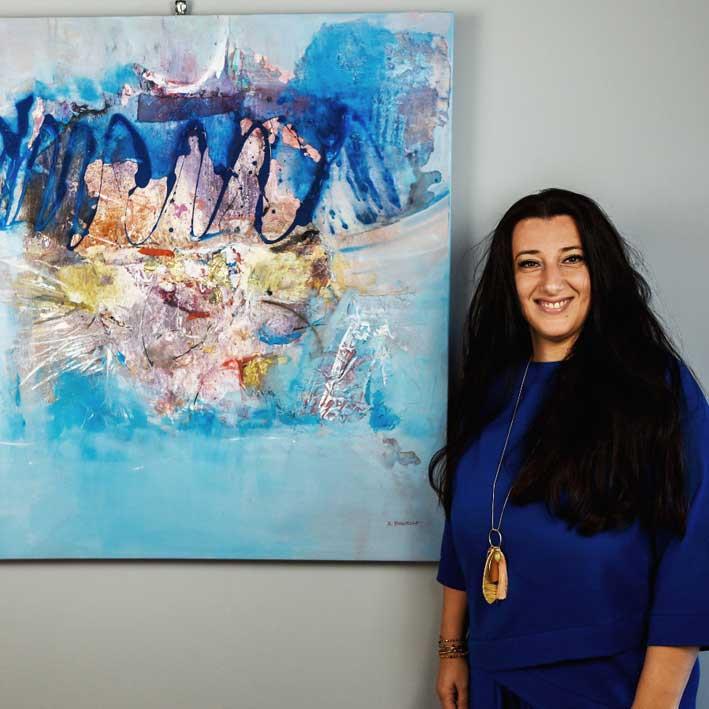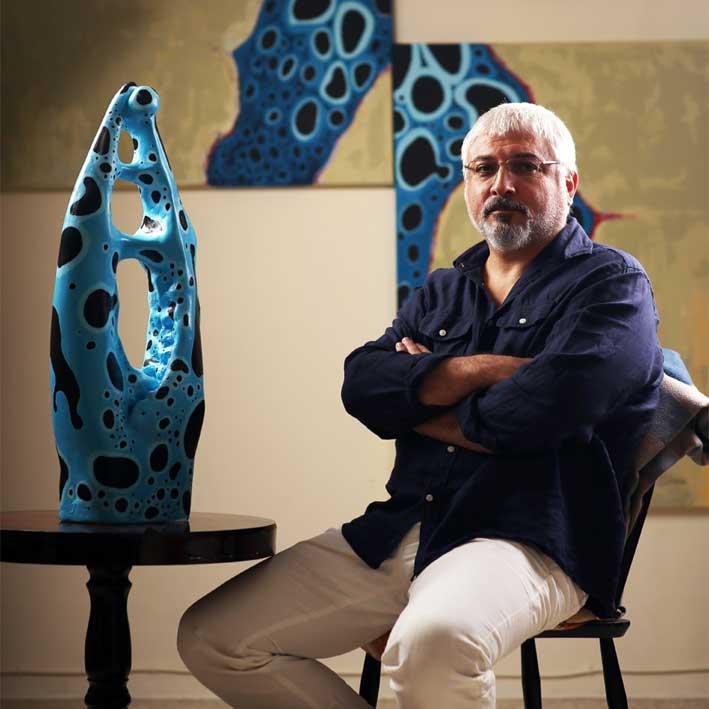Love it or hate it, many of us just don't 'get' it. More than a century since this enigmatic outlaw stormed the castle and claimed the throne, abstract art still manages to cause a stir. As three of Malta's leading abstract painters come together for a collective show, we pose the question... what's it all about then?
Before cameras were invented, we relied on artists to record images of our world. In the absence of photography or video, paintings and illustrations allowed us to glimpse of the far off countries and famous faces we may never have seen in the flesh. But with the arrival of photography, artists were no longer needed for the job. Painters were liberated from depicting reality as it really was and artists began to explore what painting could do that photography could not.
So what exactly is abstract art? Sometimes referred to as non-representational art, abstract art is characterised by an absence of recognisable objects from the material world. It attempts instead to capture or illicit intangible emotions or ideas, through formal elements such as colour, line, texture and shape.
Abstract artists often view it as an escape from reality, both for themselves and for the viewer. According to Wassily Kandinsky, the Russian artist often cited as the founder of abstract art, it's about "what the spectator lives or feels while under the effect of the form and colour combinations of the picture."
But abstract art gets a bad press. We are primed to value the skill of reproduction. It is easy to judge a realistic painting because we have a point of reference by which to measure it, i.e. the real thing. However, this same criteria cannot be applied to abstract art, so we may subconsciously presume a lack of merit in the work. Abstract painters have grown accustomed to disparaging comments, the most common of which being "My five year old could have done better than that!"

Maltese artist Rosette Bonello, who describes her work as 'informal', recounts hearing this from a parent at one of her shows. She responded by asking the five year old in question what he thought of the painting. "With a huge smile he explained he loved it because he could see a dinosaur and stars."
A study was carried out recently to establish whether we do indeed prefer the paintings of children or even animals to those by professional artists. The vast majority of participants unknowingly chose the professional artists' work, "as if sensing the artist's vision." According to the researchers, Boston College's Angelina Hawley-Dolan and Ellen Winner of Harvard, "when you hear someone say, "My kid could have done that," you can say, "Not so!"
Bonello, a primary school teacher as well as an artist, feels that "abstract art helps us listen to our inner child. It keeps us playing and seeking joy, with curiosity, awe and innocence."
She may be on to something. The field of neuroaesthetics, which studies our reactions to art, is finding that our brains experience pleasure in the processing of abstract art. Robert Pepperell of Cardiff University attributes this to 'visual indeterminacy.' "The brain sees these images as a puzzle - it struggles to "solve" the image, and the harder it is to decipher the meaning, the more rewarding we find that moment of recognition ... this delay seems to be filled with widespread neural activity, as revealed by later fMRI scans."

Abstract painter Bogdan Dyulgerov says he has a lot of fun when his audience makes associations in his paintings. "The fact that my work evokes the emotions and imaginations of the audience means that my paintings are alive, influential and filled with energy."
Local artist Jo Dounis says "it gives viewers the freedom to interpret a work as they wish, based on their emotions. In my opinion, it is more intensely personal than any other genre. You don't have to understand it to appreciate it."
To experience for yourself the artwork of Jo Dounis, Rosette Bonello and Bogdan Dyulgerov, visit the online exhibition, Big Time Sensuality, which launches today on Artsy.
Original paintings by Jo Dounis, Rosette Bonello and Bogdan Dyulgerov are available at www.allura-art.com. Big Time Sensuality runs until January 31 at https://www.artsy.net/show/allura-big-time-sensuality

Laura Swale is a visual artist, writer and entrepreneur from the UK, with a background in arts education, cultural event-planning and curatorial work. She is the founder of Allura, a multi-award-winning arts organisation based in Malta, established to showcase creative talent and bring it to a global audience.